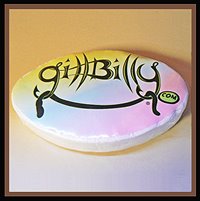Did you ever want to know how to catch that big trophy winner? Well, here are your 7 easy steps;
7 Steps
- Pick out the right bait. This is crucial. Bass like noise, so try spinnerbaits and crankbaits with a good rattle.
- Pick out the right rod. Go to the local outdoor shop and ask an employee for help.
- Cast into a area with a little grass and many rocks. Sunken trees or logs work well, too - bass like to hang near any structure. Have the bait hit the rocks.
- Reel in slowly and tug at it every once in a while. Fish like for their worms to be moving, particularly erratically so.
- When you have a bite, jerk up lightly to set the hook in the fish's mouth. Once you think you have caught a fish, reel it in.
- If you decide to keep it for dinner, the best method is to put it directly on ice. If you don't have a cooler available, a "stringer" or bucket of water will keep it somewhat cool. If you don't intend to eat the fish, return it to the water by gently holding it in the water and moving it back and forth until it swims away.
- If the bass you catch has black skin, release it immediately. The meat is very greasy and some say it tastes like menthols. (Note: A bass with "black skin" merely means it has been in the shallows in the sun and has darkened through sun exposure. Much the same as a human getting a suntan.)
TIPS
- Natural color baits work best -- greens, browns, watermelon red.
- Scents and weights may increase your chance of catching a fish. Try a wide variety to see which one is right for the area you are fishing in.
- Don't get discouraged if you don't catch fish the first time. You have to know the lake. Consider getting a map for the specific lake.
- Don't depend solely on artificial lures -- a nice night crawler may also produce spectacular results.
- Don't ignore the creature baits and artificial worms -- many experienced bass anglers will confirm this suggestion: without fail, the largest bass ever caught have been snagged using these simple baits and techniques with a spinning reel/rod combo.
- Pitch your bait into or near visible brush and underwater debris. Bass hang out near and under structure to wait for an ambush opportunity to feed. The more confident you become, you can even start skipping your bait off this structure to solicit a reaction strike from a nearby bass. That's right, bass will strike lures when they are hungry AND when they are, for lack of a better word, annoyed!
- Cast your line and bait parallel to the shore or tree line or brush line you are working and draw the bait back toward you in this fashion. This will give your lure/bait a longer time in the strike zone and will, in time, increase your strike percentages because you're extending your bait's exposure to bass for a longer period of time. Like many other sports, the savvy angler will work the percentages.
- Check to see if you need a fishing license, fees from these licenses help ensure safe and sustainable fishing opportunities.
WARNINGS
- Be sure you have a license to fish.
- Think twice about eating a bass you may catch. Reservoir and retention ponds can produce some large bass, however, retention ponds collect runoff wastes and toxins from groundwater. Eating these fish may be hazardous to your health. Conversely, bass caught from larger lakes and rivers are your best bet for fish not as likely to be toxic with metals such as mercury and other contaminants. This is due, in large measure, to the fact that lake water is replenished to varying degrees by feeder-rivers and underground springs.


No comments:
Post a Comment